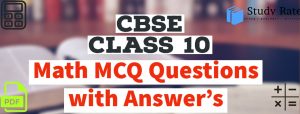Free PDF Download of CBSE Class 10 Science Chapter 10 Light – Reflection & Refraction Multiple Choice Questions with Answers. MCQ Questions for Class 10 Science with Answers were Prepared Based on Latest Exam Pattern. Students can solve NCERT Class 10 Science Light – Reflection & Refraction Multiple Choice Questions with Answers to know their preparation level.
Download Books for Boards
Join our Telegram Channel, there you will get various e-books for CBSE 2024 Boards exams for Class 9th, 10th, 11th, and 12th.
We earn a commission if you make a purchase, at no additional cost to you.
Light – Reflection & Refraction Class 10 Science MCQ Quiz Online



